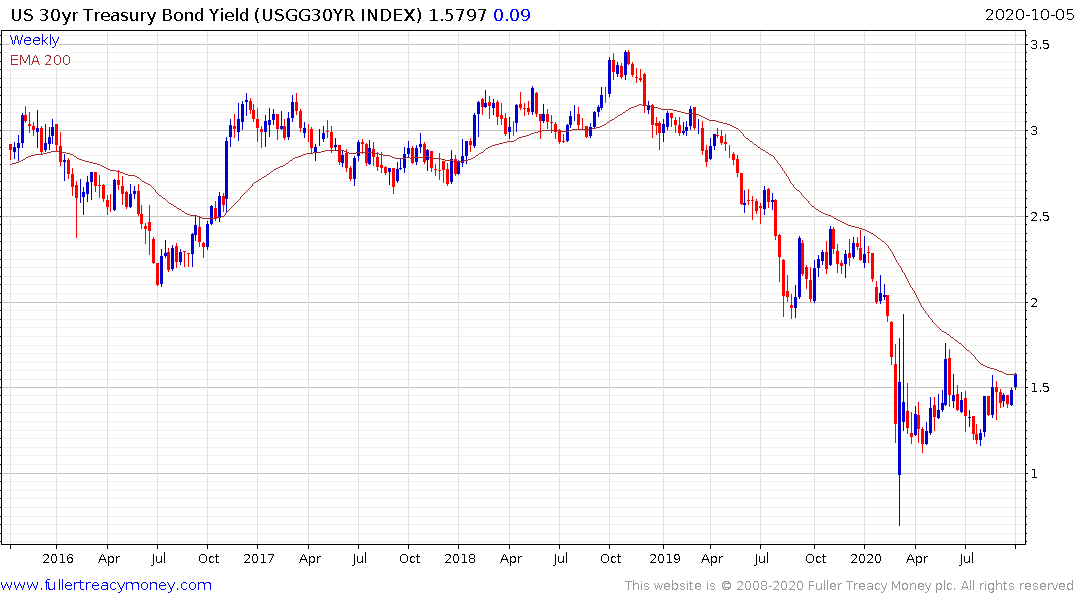Fed's Evans Sees Yearslong Wait Ahead for Inflation Overshoot
This article by Matthew Boesler for Bloomberg may be of interest to subscribers. Here is a section:
Federal Reserve officials will probably have to wait for years to see the inflation rate rise above the U.S.
central bank’s 2% target, Chicago Fed President Charles Evans said.
“I expect inflation to slowly improve, reaching 2% on a persistent basis in 2023 and then moderately overshooting 2% over the following few years,” Evans said Monday in remarks prepared for a speech at a virtual conference.
“We likely have a lot of work ahead of us. And it’s crucial that we acknowledge the magnitude of the job up front to help lessen the temptation to back off the overshoot too early in the process,” he said.
Treasury yields have risen during past episodes of quantitative easing. The support given the bond market creates an incentive to move further out the risk curve in search of returns. That means less demand for Treasuries and more demand for everything else.

Meanwhile supply of bonds is increasing since deficits need to be paid for. The 30-year yield is now testing the region of the 200-day MA. The last time the yield sustained a move above the trend mean was in 2018 when the Fed was raising rates and reducing the size of its balance sheet.
The situation couldn’t be more different today but the Fed has been reticent to act aggressively to supply additional funds while the asset price recovery has been underway. That puts them in a difficult position. Asset prices continue to advance because of the assumption additional assistance will be forthcoming. Without providing that assistance, higher yields will represent a headwind to the recovery and not least because of the impact on interest expense for the national debt.
This is where the clearest bubble risk is evident. The recovery is helping to support asset prices but the need to pay for the deficit spending is going to necessitate significant bond issuance. The Fed could find itself stimulating its way into a significant asset price inflation just like it did after the last two crashes. The only difference is it is happening faster today.
Back to top

